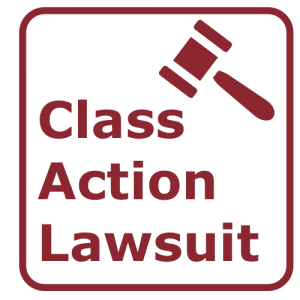Exploring Class Activity Legal Actions: What You Required to Know
Class activity lawsuits have ended up being increasingly widespread in today's lawful landscape, with people signing up with pressures to look for remedy against corporations and companies. In this discussion, we will discover the ins and outs of class activity suits, losing light on their definition, the demands for filing, and the prospective benefits and disadvantages entailed.
The Meaning of Class Action Legal Actions
A class action suit is a legal action filed by a group of individuals that have comparable cases versus an offender. Course action suits are normally brought when the number of possible complainants is as well big for individual lawsuits to be practical.
One of the crucial elements of a course activity legal action is that the lead complainant, likewise called the class representative, represents the interests of all the course members. The court appoints the lead complainant based upon their capability to relatively and sufficiently represent the class. The lead complainant works closely with the course activity attorney to seek and construct a solid situation compensation or various other solutions in support of the whole course.
In order for a class activity legal action to proceed, the court has to certify the course. This suggests that the court figures out that the claim meets specific demands, such as numerosity (a large adequate number of course members), commonality (usual concerns of law or truth), typicality (the claims of the lead complainant are common of the course), and adequacy of depiction (the lead plaintiff and course counsel are qualified of representing the course's interests) When the course is accredited, the legal action can move on, and any type of judgment or negotiation reached will relate to all class members unless they pick to opt-out.
Class activity lawsuits serve a vital purpose in offering accessibility to justice for individuals who might not have the resources to seek their cases separately. They additionally promote effectiveness in the legal system by combining comparable claims right into a solitary action, lowering the problem on both the court and the parties included.
Requirements for Submitting a Class Action Claim

An additional need is that the course has to be completely countless. The specific variety of course participants called for might differ relying on the territory and the nature of the instance. Nonetheless, it is generally anticipated that the class has to be huge sufficient that signing up with all the specific complainants into a single suit is much more efficient than having multiple different legal actions.
Additionally, it is necessary that the class representative, that is the private or entity bringing the suit on behalf of the course, has regular insurance claims and defenses to those of the class members. The representative has to likewise be able to effectively and relatively stand for the rate of interests of the entire course.

Advantages and Disadvantages of Class Action Lawsuits
Class activity legal actions supply both advantages and disadvantages for plaintiffs and defendants involved in the lawful procedure. On the one hand, among the substantial advantages of class activity claims is that they offer a cost-efficient and reliable method for individuals with similar insurance claims to seek justice jointly. By consolidating many similar cases right into one suit, class activities improve the lawful process and save time and sources for both plaintiffs and offenders.
Another benefit of course activity suits is that they permit individuals with restricted sources to seek payment for their problems. In cases where the prospective recuperation is little, specific lawsuits might not be financially practical. Nonetheless, by joining pressures in a course action, complainants can merge their resources and raise their chances of getting a fair resolution.
Additionally, class activities can promote social change by holding firms answerable for their activities. By accentuating widespread misconduct or malfunctioning items, class actions can press firms to change their techniques, improve product safety and security, or execute reforms.
Nonetheless, course activities also have disadvantages. One possible disadvantage is that specific complainants may have restricted control over the lawsuits process and the utmost result of the situation. The lead complainants and their lawyers generally make essential decisions in behalf of the entire class, which may not always align with the private rate of interests of each course member.
Furthermore, course activities can be time-consuming and lengthy, commonly taking years to get to a resolution. The intricacy and dimension of these legal actions can bring about delays and prolonged litigation, which can be irritating for both defendants and complainants looking for a timely resolution.
Steps Entailed in a Course Action Suit
The process of a class action lawsuit typically starts with the identification of a potential course and the filing of an issue. When a group of people who share comparable claims versus a defendant is recognized, the lead plaintiff, or course agent, submits a grievance in behalf of the entire course. This problem outlines the supposed wrongdoing and looks for problems or other alleviation for all members of the course.
After the complaint is submitted, the court will certainly identify whether the instance satisfies the needs for class qualification. These requirements normally include numerosity (a huge enough course), commonality (comparable legal cases), typicality (the lead complainant's insurance claims are representative of the class), and competence of depiction (the lead complainant and their attorney can sufficiently represent the course's interests)
If the court licenses the course, notice is supplied to all possible class participants, providing the chance to opt-out if they desire to seek their own individual insurance claims - Assertio class action lawsuit. If a sufficient number of class members stay, the instance will certainly proceed to the discovery phase, where both sides collect proof and details pertinent to the claims
Following discovery, the parties may participate in negotiation arrangements or continue to test. If the instance mosts likely to test and the course dominates, the court will identify the proper problems or relief to be awarded to the class participants.
Current Spots Course Activity Suits
With a strong understanding of the steps associated with a class action lawsuit, it is now important to examine some current spots instances that have actually made a substantial influence in the legal landscape. BioVie class action lawsuit. These cases have not only formed the method class action lawsuits are performed yet have also brought about adjustments in different markets
One such landmark case is the Volkswagen exhausts detraction, which caused the biggest class action negotiation in vehicle history. In 2015, it was revealed that Volkswagen had actually set up software application in their automobiles to cheat emissions examinations. This deceptiveness impacted millions of consumers worldwide, bring about a course action legal action. The negotiation reached in 2016 totaled up to around $15 billion, compensating damaged auto proprietors and penalizing on Volkswagen.
One more notable situation is the Johnson & Johnson talcum powder suit. Thousands of women filed claims against the firm, claiming that their talcum powder items caused ovarian cancer cells.
These recent spots situations demonstrate the power of course activity claims in holding firms answerable for their activities and seeking justice for afflicted individuals. They function as instances of how course activity claims can produce significant adjustments and protect the legal rights of consumers.
Verdict
To conclude, course activity suits are a lawful device that allows a group of people to jointly look for justice for a common grievance. While they offer several benefits such as efficiency and cost-effectiveness, there are also drawbacks such as potential for Assertio class action lawsuit limited compensation and lengthy legal proceedings. Comprehending the actions and needs associated with submitting a course activity claim is crucial for individuals seeking to pursue this lawful method. Current site class action suits have highlighted the importance of such situations in promoting for customer civil liberties and company liability.
One of the vital components of a class activity claim is that the lead plaintiff, additionally known as the course representative, represents the passions of all the class members.In order for a class activity legal action to continue, the court must accredit the course. This indicates that the court identifies that the lawsuit fulfills certain requirements, such as numerosity (a huge sufficient number of course members), commonality (common questions of law or fact), typicality (the cases of the lead plaintiff are common of the class), and competence of representation (the lead plaintiff and course advice are qualified of representing the course's rate of interests) Once the class is licensed, the claim can move ahead, and any judgment or negotiation got to will apply to all course members unless they pick to opt-out.
The process of a course action suit normally starts with the identification of a possible class and the declaring of an issue.